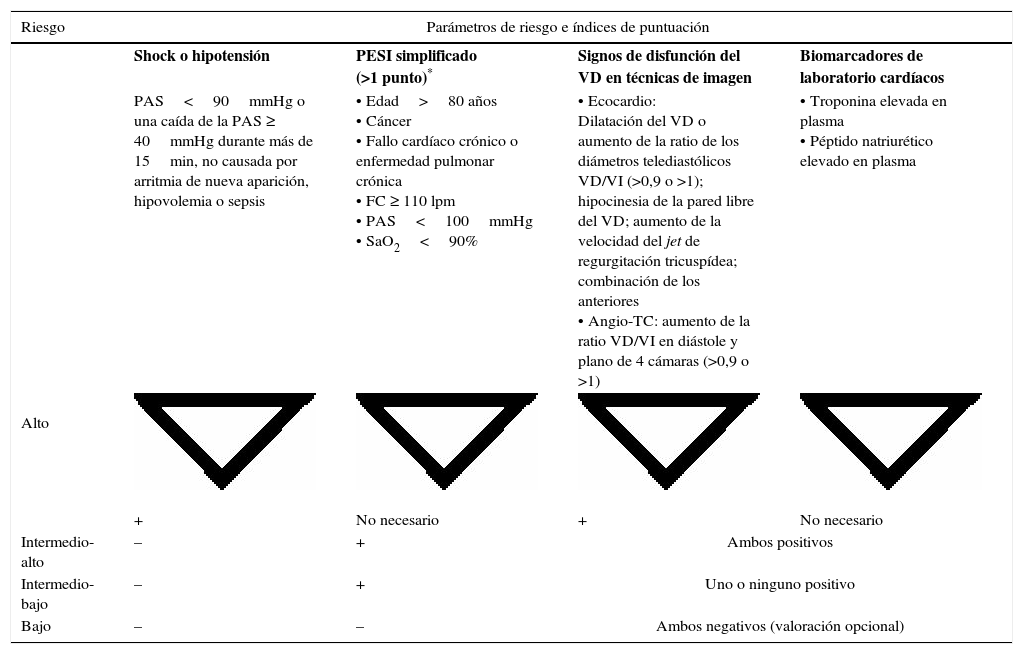Además de ser la prueba de referencia para diagnosticar la tromboembolia pulmonar aguda, la angiografía mediante tomografía computarizada de arterias pulmonares puede ofrecernos información acerca del pronóstico del paciente. Aunque la controversia sigue abierta acerca de los hallazgos radiológicos con y sin valor pronóstico, los signos de disfunción ventricular derecha evaluados en tomografía computarizada ya forman parte de los algoritmos empleados para el manejo clínico de la tromboembolia pulmonar. Sin embargo, aún está por definir el método óptimo de obtener estas medidas manteniendo el equilibrio entre la agilidad necesaria para incluir su valoración en nuestra actividad diaria sin perder la precisión en su capacidad predictiva. Además, hay otras variables asociadas a la tromboembolia pulmonar, a menudo desapercibidas, que pueden complementar la información pronóstica que podemos ofrecer al clínico. Esta revisión tiene como objetivo clarificar algunos de los aspectos más controvertidos sobre el valor pronóstico de la tomografía computarizada en el paciente con embolia pulmonar según la evidencia disponible. Conocer qué variables están adquiriendo más importancia pronóstica, cómo detectarlas y por qué es importante reflejarlas en nuestros informes podrá mejorar el manejo de estos pacientes.
In addition to being the standard reference for the diagnosis of acute pulmonary thromboembolism, CT angiography of the pulmonary arteries can also provide valuable information about the patient's prognosis. Although which imaging findings are useful for prognosis remains controversial, signs of right ventricular dysfunction on CT are now included in clinical algorithms for the management of pulmonary thromboembolism. However, the optimal method for obtaining these measurements while maintaining a balance between the ease of use necessary to include their evaluation in our daily activity and the loss of precision in its predictive capacity remains to be determined. Moreover, other variables associated with pulmonary thromboembolism that often go unobserved can complement the prognostic information we can offer to clinicians. This review aims to clarify some of the more controversial aspects related to the prognostic value of CT in patients with pulmonary embolisms according to the available evidence. Knowing which variables are becoming more important in the prognosis, how to detect them, and why it is important to include them in our reports will help improve the management of patients with pulmonary embolism.
Artículo
Comprando el artículo el PDF del mismo podrá ser descargado
Precio 19,34 €
Comprar ahora

















